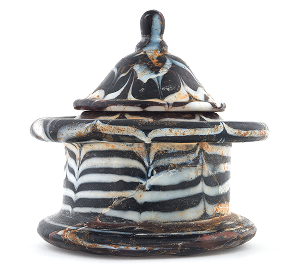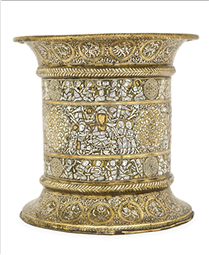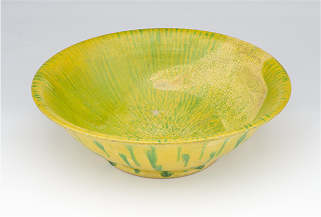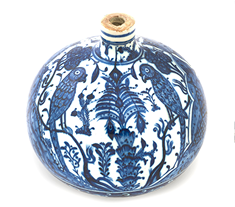Welcome to Qatar Museums

Find out what’s on at Qatar Museums
Explore Sections
الـفـعــالــيــات WHAT’S ON
الــمـــقــتــنــيـات COLLECTIONS
زيـــارة VISIT
Flask
Museum of Islamic Art
Full title:
Flask
Artist:
Location created:
Period:
1485 – 1535
Materials:
112113114
Object nummer:
PO.5.1997
Record type:
Acquisition form:
Interested in donating or selling an artwork to Qatar Museums? Submit your information through this acquisition proposal form.
Iznik pottery is named after the town of Iznik, in western Anatolia (modern day Turkey), where it was initially made. The earliest evidence of Iznik production occurred during the reign of Ottoman Sultan Mehmed II (r. 854-886 AH/1451-81 CE), whose appreciation for fine blue and white Chinese Ming porcelains inspired him to start making similar ceramics. As such, early Iznik pottery was blue and white, and largely influenced by Chinese motifs. This blue and white flask is unusual in its shape, with its rotund body and narrow neck. The flask would have originally had a long slender neck, now broken. The decoration around the flask's bulbous body shows trees, floral patterns, and parrots on one side; while on the opposite side an architectural vista - with structures bearing cross-shaped windows – is depicted, perhaps itself a representation of Sultan Mehmed II's new palatial complex, the Topkapı Saray (built between 863-870 AH/1459-65 CE). This fine flask was probably produced around the late 9th or early 10th century AH/ late15th or early 16th century CE, shortly after the palace was built, and used at the Ottoman court as a wine container.
Share with a friend
You may also like
-

Egypt,Syria
Inkwell pot
-

Syria, Iraq
Tray Stand
-

Iraq
Abbasid Splash Ware Bowl
-

Iznik
Flask





